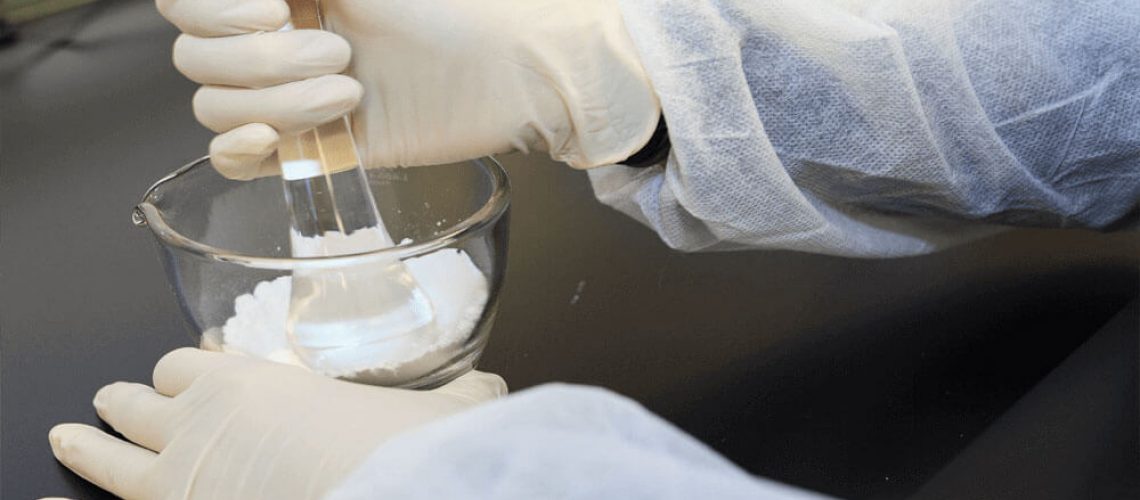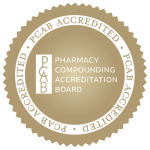Estrogens, the primary female hormones, are a group of steroid compounds. Estrogen is secreted mainly by the ovaries and is the hormone responsible for female sexual characteristics. Estrogen has about 400 functions in the body, affecting every organ and system, including the skin. As skin is the largest organ in the body, it is important to learn and understand the role of hormones in the skin.
Here’s a quick primer on what role the estrogen plays on our skin:
- Increases collagen- which maintains skin thickness
- Maintains skin moisture
- Reduces wrinkles by affecting the quality of elastic fibers and collagen in the skin
- Decreases wound healing time
Even though we’ll focus only on estrogen in this article, we must mention that estrogen is a hormone and no hormone works alone. Actually, all hormones in a healthy body work together in great harmony. In certain circumstances, and when we age, many changes in hormones levels occur leading to breaking the harmony. This creates hormonal imbalance.
Aging itself comes with major decline in estrogen and other hormones, causing visible changes in the skin. When hormonal imbalance occurs, the skin changes may be not only more dramatic, but also associated with many other very uncomfortable symptoms.
When talking about estrogen, we should clarify one important fact: we are talking about a group of estrogen compounds.
Not going into much detail, we must mention that there are three main Estrogens made in a human body: Estrone – E1, Estradiol – E2 and Estriol – E3. They are named based on the differences in their molecular structure and they are produced at various stages in a woman’s life.
Estradiol is the dominant estrogen compound produced mainly during reproductive years. It is a very much needed hormone for its very important effects throughout the body. But estradiol is a very strong hormone, that can also cause a lot of harm if it is in disharmony with the other hormones. For example, a little too much estradiol can cause cancer due to its proliferative function, just to name one major potential negative effect.
Another important thing to mention here is the fact that we live in a very toxic environment containing many chemical compounds that mimic estrogen. They are called xenoestrogens. They behave in the body similar to (or worse than) estradiol.
In normal circumstances, most of the potential negative effects of estradiol are countered by progesterone. In the aging body, progesterone decline is usually more severe than estrogen decline. If we take now into consideration the addition of xenoestrogens, it is easy to understand how estrogen dominance occurs in most of the cases.
Estriol is produced by the placenta in large amounts during pregnancy. It is a weak form of Estrogen, but that comes with a much less concerning safety profile.
While European cosmetic manufacturers have been producing estriol skin creams since the 1990s, in the United States, these products have not been as popular in part, it is assumed, because hormones cannot be patented, meaning that a product’s active ingredient can be replicated and result in market saturation, meaning that the big manufacturers cannot make big money off of it.
Estrone is another estrogen compound produced in humans. It is predominantly produced after menopause. Estrone can take various metabolic pathways, some of them carcinogenic.
How It Works
Estriol is known to manage symptoms of menopause. Menopause means aging. Aging brings with it changes throughout the whole body, including the skin.
Replenishing the body with some of its lost estrogen, will help with skin improvement as well.
But when one does not want systemic application of estrogen (transdermally), estriol can be used topically – on the face. It will help minimize fine lines and wrinkles, helps nutrients and oxygen circulate, increases moisture in the skin and can minimize sebum production. When used in low doses, estriol typically has no adverse side effects.
Considerations
When considering using Estrogen in cosmetic products, Estriol should be the smart choice.
When using Estrogen in cosmetic products, as we mentioned earlier, we should be mindful of the following:
Throughout the whole body – including the skin, there are estrogen receptors. There are two types of estrogen receptors – alpha and beta. Understanding the distribution of the ER’s and the affinity of various forms of estrogen or estrogen mimicking compounds to these receptors, will give us a clearer picture of which form of estrogen is more beneficial to be used in different instances, particularly in skin care products.
Estradiol equally binds to ER α and ER ß
Estrone selectively binds to ER α at a 5:1 ratio (increased breast cell proliferation)
Estriol selectively binds to ER ß at a 3:1 ratio (inhibits proliferation)
Other hormones and skin
Among hormones that affect the skin, estrogen is apparently the most studied one.
But estrogen is not the only hormone that has effects on skin.
Let us take a look at other hormones affecting the skin and how can we use them as part of the anti-aging protocol.
Progesterone
Progesterone is proven to have inhibitory effect on the 5-alpha reductase, an enzyme that reduces testosterone to dihydrotestosterone (DHT). Thus, progesterone has an anti-androgenic effect.
This results in less sebum (skin oil), fewer skin breakouts. It also helps with hair growth.
When women want hormone replacement therapy to stay young and feel good, they should always use estrogen with progesterone to keep their hormones balanced. Progesterone neutralizes and balances excess estrogen, helps prevent osteoporosis and can help improve sex drive among many other vital benefits.
Several recent studies prove the benefits of using Progesterone for antiaging purposes in peri and post-menopausal women.
We’ll refer to other hormones that can be used in skin care in other articles.
Below are a few excerpts from other authors that compiled evidence-based information on hormones and a few examples of small studies on effects of estrogen on skin:
Holtorf BHRT debate
“Physicians must translate both basic science results and clinical outcomes to decide on the safest, most efficacious treatment for patients. Evidence-based medicine involves the synthesis of all available data when comparing therapeutic options for patients. Evidence-based medicine does not mean that data should be ignored until a randomized control trial of a particular size and duration is completed. Rather, it demands an assessment of the current available data to decide which therapies are likely to carry the greatest benefits and the lowest risks for patients.”
“Until recently, estriol was available in the United States as a compounded prescription, but was banned in January 2008 by the FDA, which stated that it was a new, unapproved drug with unknown safety and effectiveness, although its symptomatic efficacy is generally not in question. The FDA has not received a single report of an adverse event in more than 30 years of estriol use. Estriol is also the subject of a US Pharmacopeia monograph. The FDA Modernization Act of 1997 clearly indicated that drugs with a US Pharmacopeia monograph could be compounded. It appears that the FDA took action, not because estriol is at least as safe and effective as current estrogens on the market, but in response to what was considered unsupported claims that estriol was safer than current forms of estrogen replacement and because there is no standardized dose. Estriol has unique physiologic properties associated with a reduction in the risk of breast cancer, and combining estriol with estradiol in hormone replacement preparations would be expected to decrease the risk for breast cancer. In cardiovascular disease, synthetic progestins, as opposed to progesterone, negate the beneficial lipid and vascular effects of estrogen. Transdermal bioidentical estrogen and progesterone are associated with beneficial cardiovascular and metabolic effects compared with the use of CEE and synthetic progestins. Based on both physiological results and clinical outcomes, current evidence demonstrates that bioidentical hormones are associated with lower risks than their non-bioidentical counterparts. Until there is evidence to the contrary, current evidence dictates that bioidentical hormones are the preferred method of HRT. Conclusion – A thorough review of the medical literature supports the claim that bioidentical hormones have some distinctly different, often opposite, physiological effects to those of their synthetic counterparts. With respect to the risk for breast cancer, heart disease, heart attack, and stroke, substantial scientific and medical evidence demonstrates that bioidentical hormones are safer and more efficacious forms of HRT than commonly used synthetic versions. More randomized control trials of substantial size and length will be needed”
Frier Levitt – Pharmacy Law
The FDA has recently provided limited additional information in an informal email on whether a pharmacy may use certain bulk drug substances in compounding. Specifically, the FDA has indicated that drug products containing Estriol may be compounded in accordance with Section 503A by a licensed pharmacist pursuant to a patient-specific prescription, based on the fact that Estriol is the subject of an applicable USP monograph. The FDA provided this statement in an email response to this office following several questions submitted by us following the passage of the Drug Quality and Security Act of 2013.
Estrogen vs. Placebo
A 1994 study published in the journal Maturitas, an International Journal of Midlife Health and Beyond compared an estrogen-based skin cream and a placebo skin cream on 54 women aged 52 to 70. After 12 weeks, the group using the estrogen-based cream had an improvement in fine wrinkles; after 24 weeks, there was evidence of significant facial skin thickening for the estrogen group. Those taking the estrogen cream tolerated the hormone well.
Post-Menopause Results
A 1996 study published in the International Journal of Dermatology looked at the effects of topical hormone treatment on a group of perimenopausal women. The researchers found that after six months of treatment with estrogen-based skin creams, “elasticity and firmness of the skin had markedly improved and the wrinkle depth and pore sizes had decreased by 61 to 100 percent.” No hormonal side effects were noted.
References:
Br J Dermatol. 2005 Sep;153(3):626-34.
Effects and side-effects of 2% progesterone cream on the skin of peri- and postmenopausal women: results from a double-blind, vehicle-controlled, randomized study.
Holzer G1, Riegler E, Hönigsmann H, Farokhnia S, Schmidt JB.
Chen WY, Manson JE, Hankinson SE, Rosner B, Holmes MD, Willett WC, Colditz GA (2006). Unopposed estrogen therapy and the risk of invasive breast cancer. Arch Intern Med. 2006; 166(9):1027-32
Cicinelli E, de Ziegler D, Galantino P, Pinto V, Barba B, Morgese S, Schonauer S (2002). Twice-weekly transdermal estradiol and vaginal progesterone as continuous combined hormone replacement therapy in postmenopausal women: a 1-year prospective study. Am J Obstet Gynecol 2002; 187(3):556-60.
Colditz GA (1998). Relationship between estrogen levels, use of hormone replacement therapy, and breast cancer. J Natl Cancer Inst 1998; 90(11):814-23.
Nachtigall LE (1994). Comparative study: Replens versus local estrogen in menopausal women. Fertil Steril 1994; 61(1):178-80.
National Institutes of Health (2005). National Institutes of Health Stateof-the-Science Conference statement: management of menopause-related symptoms. Ann Intern Med 2005; 142(12 Pt 1):1003-13.




